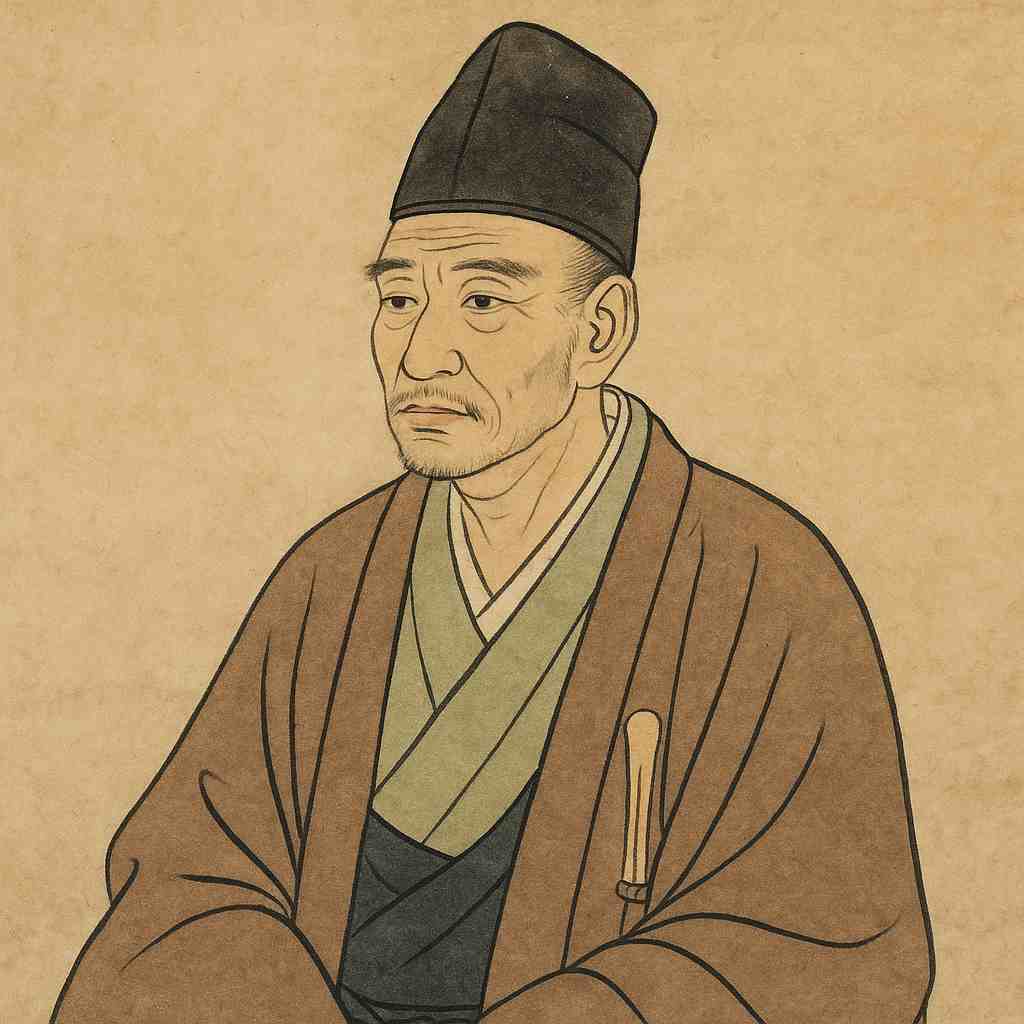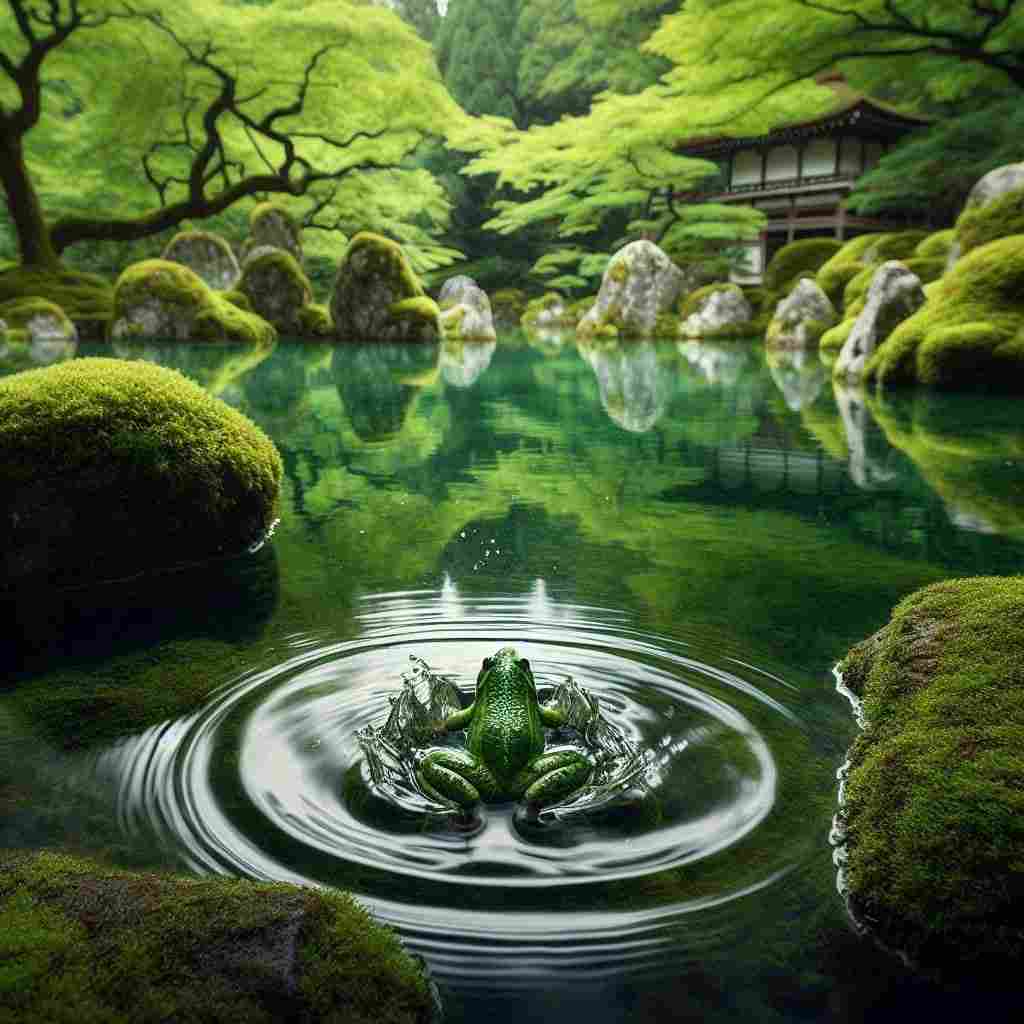1 Poems by Matsuo Bashō
1644 - 1694
Matsuo Bashō Biography
Matsuo Bashō, the 17th-century Japanese poet whose name has become synonymous with haiku, stands as one of the most celebrated figures in world literature. A master of brevity and precision, Bashō's works transcend the limits of language, inviting readers to experience profound emotional resonance through minimalistic expressions. Born in 1644 in Ueno, Iga Province (now part of Mie Prefecture), Bashō's life and work embody the fusion of Zen Buddhism, nature, and poetic innovation, reflecting a complex interplay of simplicity and depth. His artistic journey offers a remarkable insight into the cultural and literary currents of Japan's Edo period.
Bashō's birth name was Matsuo Kinsaku, and he came from a family of samurai class but modest means. His father, Matsuo Yozaemon, was likely a low-ranking samurai who also farmed to supplement his income. Despite this seemingly humble beginning, Bashō's early life hinted at a predilection for literary pursuits. As a boy, he entered the service of Todo Yoshitada, a local samurai lord who shared his interest in poetry. The camaraderie between Bashō and Yoshitada proved formative, with both young men honing their skills in haikai no renga, a collaborative poetic form that was growing in popularity during the era. These early forays into poetry laid the groundwork for Bashō’s later innovations.
Yoshitada's untimely death in 1666 marked a turning point in Bashō’s life. Severed from his patron, he left the samurai world and embarked on a search for a new identity. During this period of wandering, Bashō began to immerse himself in the burgeoning haikai tradition, which was then evolving into a genre distinct from the courtly and austere waka poetry of earlier centuries. Haikai was humorous, irreverent, and deeply connected to the everyday lives of common people, making it fertile ground for Bashō’s unique sensibilities.
By the 1670s, Bashō had relocated to Edo (modern-day Tokyo), where he sought to establish himself within the urban poetry circles. This was a period of rapid social and economic transformation in Japan, as the Tokugawa shogunate ushered in an era of relative peace and stability. Edo, a bustling metropolis, became a hub of cultural exchange and literary experimentation. Bashō studied under prominent haikai masters such as Kitamura Kigin, refining his craft and gaining recognition. His early works reveal a poet eager to engage with the playful, witty spirit of haikai, yet they also hint at his burgeoning philosophical depth.
In 1680, Bashō retreated to a small hut along the Fukagawa River, seeking solace and inspiration away from the urban sprawl. This period marked the beginning of his mature poetic style. The humble dwelling, overshadowed by a plantain tree (bashō in Japanese), inspired the pen name he would adopt. The plantain tree, with its broad, fragile leaves, became a fitting metaphor for Bashō’s aesthetic ideals: transient, unpretentious, and deeply attuned to the rhythms of nature.
Bashō’s embrace of Zen Buddhism profoundly influenced his poetry. Zen teachings emphasize mindfulness, impermanence, and a direct, unmediated experience of reality—concepts that Bashō masterfully wove into his verse. His poems began to eschew the light-hearted frivolity of earlier haikai, instead gravitating toward moments of quiet reflection and poignant observation. Bashō’s verse transformed the haiku (then still known as hokku, the opening stanza of a haikai sequence) into a standalone poetic form of remarkable depth and versatility.
The publication of Kai Oi ("The Seashell Game") in 1672 marked Bashō’s first major critical success, but it was his later works that solidified his reputation. In 1684, he undertook his first great journey, traveling from Edo to Kyoto and Nara. This experience, chronicled in the poetic travelogue Nozarashi Kikō ("Record of a Weather-Exposed Skeleton"), exemplifies Bashō’s blending of poetry with prose, a genre known as haibun. His travels were not merely physical excursions but spiritual pilgrimages, steeped in the Zen ideal of embracing the impermanence and interconnectedness of all things.
Throughout the 1680s and 1690s, Bashō embarked on several more journeys, including the celebrated trek immortalized in Oku no Hosomichi ("The Narrow Road to the Deep North"). This masterpiece, completed in 1694, represents the pinnacle of Bashō’s literary achievement. A fusion of haiku and prose, it recounts a five-month journey through the rugged northern regions of Japan, interweaving descriptions of natural landscapes with historical and cultural reflections. The text’s meditative tone and evocative imagery have captivated readers for centuries, cementing Bashō’s status as a literary icon.
Bashō’s haiku often reveal an extraordinary ability to distill complex emotions and observations into just seventeen syllables. Consider one of his most famous poems:
古池や
蛙飛び込む
水の音
An old pond—
A frog leaps in,
The sound of water.
This deceptively simple verse encapsulates Bashō’s genius. The imagery is spare, yet it evokes a vivid sensory experience, inviting readers to pause and immerse themselves in the moment. The poem’s profundity lies not in elaborate diction or metaphor but in its directness and the depth of feeling it conveys.
Bashō’s influence extended far beyond his poetry. As a teacher, he cultivated a wide circle of disciples, encouraging them to explore the aesthetic principles he championed: sabi (the beauty of loneliness or desolation), wabi (a sense of austere simplicity), and karumi (lightness). These concepts, rooted in Zen philosophy and traditional Japanese aesthetics, continue to resonate in contemporary art and literature.
Despite his growing fame, Bashō remained deeply committed to the life of a wanderer and ascetic. He rejected material comforts, viewing his journeys as a means of spiritual and artistic renewal. This restless pursuit of enlightenment and inspiration defined his final years. In 1694, while traveling to Osaka, Bashō fell ill and passed away at the age of 50. His last recorded poem, composed on his deathbed, reflects his lifelong embrace of impermanence:
旅に病んで
夢は枯野を
駆け巡る
Sick on a journey,
My dreams wander
The withered fields.
Bashō’s legacy endures not only in the haiku tradition but also in the broader realm of global literature. His works have been translated into countless languages, inspiring poets and readers worldwide. The universal themes of his poetry—nature, transience, and the search for meaning—transcend cultural boundaries, offering timeless insights into the human condition.
In the centuries since his death, Bashō has come to symbolize the essence of haiku, and his innovations continue to shape the form. Modern poets, both in Japan and abroad, owe a debt to Bashō’s pioneering spirit. His ability to capture the fleeting beauty of the world in just a few words remains a testament to the power of simplicity and the enduring relevance of poetry as an art form.
This text was generated by AI and is for reference only. Learn more
Username Information
No username is open
Unique usernames are free to use, but donations are always appreciated.
Quick Links
© 2024-2025 R.I.Chalmers (V2Melody).

All music on this site by R.I.Chalmers (V2Melody) is licensed under a Creative Commons Attribution-NonCommercial 4.0 International License.
Attribution Requirement:
When using this music, you must give appropriate credit by including the following statement (or equivalent) wherever the music is used or credited:
"Music by R.I.Chalmers (V2Melody) – https://v2melody.com"
Support My Work:
If you enjoy this music and would like to support future creations, donations are always welcome but never required.
Donate


